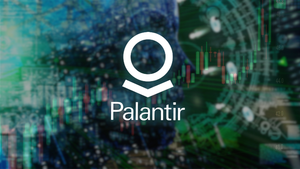
Dallas, Texas – October 1, 2025 – The Highland Opportunities and Income Fund (NYSE: HFRO) has announced its regular monthly distribution for October 2025, declaring a payment of $0.0385 per share. This distribution, payable on October 31, 2025, to shareholders of record as of October 24, 2025, signals the closed-end fund's (CEF) continued commitment to providing consistent income to its investors. The announcement comes as financial markets navigate a complex landscape of persistent inflation, evolving interest rate expectations, and a cautiously recovering real estate sector.
For income-focused investors, this consistent payout offers a degree of predictability, contributing to an annualized dividend rate of $0.46 per share, which translates to a yield of approximately 7.20%. However, a deeper examination reveals that the fund's strategy, portfolio composition, and the broader economic environment are all critical factors in assessing the long-term implications and sustainability of such distributions.
Detailed Coverage: HFRO's Distribution Strategy and Market Context
The October 2025 distribution of $0.0385 per share is a continuation of a consistent monthly payout that Highland Opportunities and Income Fund (NYSE: HFRO) has maintained throughout recent months in 2025. This stability follows a strategic pivot and distribution adjustment initiated in January 2024. At that time, the fund, managed by NexPoint Asset Management, L.P., modified its investment objective and changed its name to reflect a new focus on seeking growth of capital along with income. This involved a shift in its primary investment focus from bank loans to a more diversified portfolio heavily weighted towards real estate and private equity. The January 2024 adjustment in the distribution rate was specifically designed to align payouts with the cash flow generated from this new portfolio composition, aiming for a more sustainable monthly distribution level.
The fund's portfolio is now significantly diversified, including investments in real estate securities (such as REITs), preferred equity, convertible securities, mezzanine debt, secured and unsecured fixed-rate loans, corporate bonds, distressed securities, structured products, equities (both public and private), and floating rate loans. A substantial portion of its assets, reportedly at least 25% and in some analyses as high as 67.5% to 92.3%, is directly or indirectly secured by real estate. Key players involved in this fund's management are NexPoint Asset Management, L.P., overseeing its investment strategy and distribution policy.
As of October 1, 2025, the immediate market reaction to this specific distribution announcement is likely muted, as it aligns with the fund's established pattern. However, broader market interest in HFRO has often centered on its persistent discount to Net Asset Value (NAV) and the sustainability of its distributions given its portfolio's composition and past performance. Concerns about the fund's ability to consistently generate sufficient net investment income to cover its distributions, sometimes leading to a reliance on capital gains or even return of capital, have been noted in various analyses.
Impact on Companies and Investors
The consistent monthly distribution from Highland Opportunities and Income Fund (NYSE: HFRO) carries distinct implications for various stakeholders, primarily its investors and, indirectly, the companies within its portfolio and competitors in the closed-end fund (CEF) market.
Potential Winners:
- Income-Focused Investors: The primary beneficiaries are investors seeking a predictable, regular income stream. The consistent $0.0385 monthly payout is particularly attractive for retirees or those who depend on investment income.
- Long-Term Shareholders (if sustainable): If HFRO can sustainably generate income and capital gains to cover its distributions without eroding its Net Asset Value (NAV), long-term shareholders who reinvest their distributions could benefit from compounding returns.
- HFRO's Underlying Portfolio Companies (indirectly): A stable and well-managed HFRO that maintains investor confidence can provide consistent capital to its underlying portfolio companies, particularly those in less liquid private equity or real estate sectors. This stability can be beneficial for the growth and operational health of these companies. HFRO's top holdings include various NexPoint-related real estate entities and Nfront Inc. Shs Stock Settlement.
Potential Losers:
- Investors if Distributions are Unsustainable (Destructive Return of Capital): A significant risk arises if HFRO's distributions consistently exceed its total return (net investment income plus realized capital gains). In such cases, a portion of the distribution may come from the investors' original capital (destructive return of capital). This can erode the fund's NAV over time, reducing its future earning power and potentially leading to a decline in share price and future distribution cuts. An investment research firm recently noted HFRO's "underwhelming performance" and inconsistent income levels, questioning the sustainability of its distributions if earnings do not improve.
- HFRO Itself (if distributions are unsustainable): Continuous reliance on destructive return of capital would diminish HFRO's asset base and earning capacity, making it harder to meet its investment objectives and potentially leading to a loss of investor confidence and further widening of its discount to NAV.
The consistent distribution can enhance HFRO's attractiveness and investor sentiment, particularly in the income-oriented CEF market. However, it also puts pressure on NexPoint Asset Management, L.P. to generate sufficient returns. HFRO has historically traded at a significant discount to its NAV (e.g., -43.86% as of September 29, 2025). While consistent distributions could help narrow this discount, concerns about the sources of the distribution may prevent it from doing so. For shareholders, predictable income is a benefit, but understanding the total return and tax implications of distributions (which can include interest income, dividends, capital gains, and return of capital) is crucial. Competitors in the CEF market, such as Aberdeen Total Dynamic Dividend Fund (NYSE: AOD), abrdn Global Premier Properties Fund (NYSE: AWP), and Advent Convertible and Income Fund (NYSE: AVK), might face pressure to offer competitive payout structures, highlighting the broader industry focus on distribution sustainability.
Wider Significance: CEF Trends, Real Estate, and Regulatory Scrutiny
The consistent monthly distribution from Highland Opportunities and Income Fund (NYSE: HFRO) for October 2025 resonates within several broader financial market contexts, including trends in closed-end funds (CEFs), the evolving real estate market, and regulatory considerations around distribution sources.
In the broader CEF industry, managed distribution policies, like HFRO's, are common strategies to attract and retain income-seeking investors by providing predictable payouts. However, the sustainability of these distributions is a constant point of scrutiny. While the overall trend for CEF distributions in 2025 is expected to be stable, funds that can maintain consistent payouts amidst market volatility may gain a competitive edge.
HFRO's significant exposure to real estate makes its performance highly sensitive to that sector. As of late 2025, the real estate market is characterized by cautious sentiment. Elevated mortgage rates (around 6.5% to 6.7%) continue to suppress sales, and U.S. house prices are projected for subdued growth of 3% or less in 2025. Commercial real estate is showing nascent signs of recovery, with interest rates starting to ease, but fundraising for property investments remains challenging. HFRO's ability to maintain its distribution despite these headwinds is notable, especially when "distributions from property-focused closed-end funds have stalled" in some areas. This could potentially draw capital away from competitors struggling to maintain similar payout levels.
Regulatory implications, particularly concerning the source of distributions, are paramount. CEFs are legally required to distribute a significant portion of their income and realized gains to maintain tax-free status. Distributions can come from net investment income, realized capital gains, or return of capital (ROC). While ROC is not inherently negative (e.g., pass-through or constructive ROC), "destructive ROC" – where a fund returns investors' original capital, eroding NAV – is a major red flag. The SEC requires transparency regarding these sources, and investors typically receive a Form 1099-DIV detailing the tax characterization of distributions. HFRO's shift towards a portfolio that may rely more on capital gains and potentially ROC for distributions, as opposed to solely net investment income, highlights this ongoing regulatory and investor focus.
Historically, many CEFs have cut distributions during market downturns, especially those with leverage. However, some funds, like Reaves Utility Income Trust (NYSE: UTG) and BlackRock Health Sciences Trust (NYSE: BME), have demonstrated remarkable consistency. The key takeaway from these precedents is that a consistent distribution can be part of a viable strategy if the fund's total return (NAV performance plus distributions) is robust enough to cover the payout without eroding the fund's capital base. HFRO's current strategy, therefore, attempts to balance income generation with capital growth, aligning with a common managed distribution strategy, but its long-term success hinges on the sustainability of its underlying earnings.
What Comes Next: Navigating Opportunities and Challenges
Following the October 2025 distribution, Highland Opportunities and Income Fund (NYSE: HFRO) and its manager, NexPoint Asset Management, L.P., face a dynamic environment with both opportunities and challenges. The fund's ability to navigate these factors will shape its short-term and long-term trajectory.
In the short term (next 6-12 months), HFRO is likely to aim for continued distribution stability at the $0.0385 per share level, which could attract income-focused investors. The performance of its substantial real estate holdings will be closely tied to the broader real estate market, where modest growth in residential prices and a potential easing of mortgage rates are anticipated. However, persistent inflation could still pose challenges. HFRO's persistent discount to NAV (Net Asset Value) remains a key concern, though a sustained, consistent distribution, coupled with improving market conditions and potential share repurchases, might help to gradually narrow this gap.
For the long term (1+ years), the outlook for HFRO is intrinsically linked to a potential sustained recovery and growth in the real estate market beyond 2025. Projected increases in median house prices and continued improvements in the multifamily rental market could benefit HFRO's real estate-backed investments, leading to capital appreciation and more sustainable income. The fund's strategic focus on both capital growth and income, particularly through its high-conviction real estate and private equity investments, could enhance shareholder value if successfully executed. However, the long-term sustainability of distributions will critically depend on the fund's ability to generate sufficient net investment income and capital gains, rather than relying heavily on return of capital that erodes NAV.
Potential strategic pivots or adaptations for NexPoint Asset Management, L.P. might include continued active portfolio management within real estate to capitalize on specific sub-sectors or geographies (e.g., single-family rentals in the Sunbelt states). Prudent management of the fund's leverage (around 18-28%) will be crucial in a fluctuating interest rate environment. Enhanced communication regarding portfolio allocation and ongoing efforts to address the discount to NAV, potentially through further share repurchases or clearer disclosures about underlying asset values, could also be considered.
Market opportunities could emerge from further easing interest rates, which would reduce borrowing costs for real estate and stimulate transactional activity. Resilient rental demand, particularly in the multifamily sector, and opportunities in "value-add" real estate could also drive returns. Conversely, challenges include persistent inflation leading to sustained high interest rates, geopolitical and economic uncertainty, and potential liquidity risks associated with the fund's private and less liquid real estate investments.
Potential scenarios and outcomes include a base case of stable performance, where the distribution is maintained, and the real estate market experiences gradual recovery, leading to modest NAV appreciation and a slow narrowing of the discount. An optimistic case might see rapid interest rate declines, strong economic growth, and highly effective management, leading to significant share price appreciation and a considerable reduction in the discount. A bearish case, however, could involve stubbornly high inflation, an economic slowdown, and insufficient earnings to cover distributions, resulting in NAV declines, a widening discount, and potential future distribution cuts.
Wrap-Up: Vigilance in a Dynamic Market
Highland Opportunities and Income Fund's (NYSE: HFRO) announcement of a consistent $0.0385 per share monthly distribution for October 2025 underscores its commitment to providing a regular income stream to its investors. This stability, however, is set against a backdrop of complex financial market dynamics, including an evolving interest rate environment and a real estate sector characterized by cautious optimism.
Key takeaways from this event center on HFRO's strategic shift in early 2024 to a diversified portfolio heavily concentrated in real estate and private investments, aiming to balance capital growth with income. While the current distribution rate is designed for sustainability, the fund's long-term performance and the quality of its distributions remain subject to the performance of these underlying, often less liquid, assets. The persistent trading of HFRO at a significant discount to its Net Asset Value (NAV) reflects ongoing investor apprehension regarding these factors, including the potential for distributions to include a return of capital.
Moving forward, the market assessment suggests a continued "higher-for-longer" interest rate environment through 2025, with potential easing into 2026. The real estate market, a critical driver for HFRO, is expected to see modest growth, avoiding a crash but still navigating affordability challenges and a "lock-in effect" that limits transaction volume. The closed-end fund sector overall shows resilience, but real estate-focused funds have lagged, and new SEC guidance for CEFs investing in private funds adds a layer of regulatory scrutiny.
Final thoughts on significance and lasting impact revolve around HFRO's ability to effectively monetize its private and real estate-backed investments at favorable valuations while judiciously managing its leverage. The fund's strategy represents an attempt to maximize value through high-conviction, less liquid holdings. Its lasting impact on shareholder value will depend on whether this strategy can consistently generate sufficient total returns to cover distributions without eroding the fund's capital base.
What investors should watch for in the coming months:
- Distribution Sustainability and Sources: Closely monitor the composition of future distributions (Form 1099-DIV). A sustained reliance on destructive return of capital would be a significant concern.
- Real Estate Market Performance: Track key indicators such as interest rates, property values, rental income growth, and transaction volumes, as these directly impact HFRO's NAV.
- Net Asset Value (NAV) and Discount Dynamics: Observe HFRO's NAV performance and whether the discount to NAV narrows or widens, which can signal changes in underlying asset values or investor sentiment.
- Leverage Management: Pay attention to management commentary on their leverage strategy, especially in response to interest rate fluctuations.
- Management Commentary and Shareholder Engagement: Review official communications from NexPoint Asset Management, L.P. for insights into portfolio adjustments, market outlook, and strategic initiatives.
In conclusion, while HFRO's October 2025 distribution maintains its monthly income stream, investors must remain vigilant regarding the fund's underlying strategy, its significant real estate and private equity exposure, and the broader economic and interest rate environment. The fund's long-term performance and the sustainability of its distributions will hinge on its ability to navigate these complex factors effectively.
This content is intended for informational purposes only and is not financial advice.






